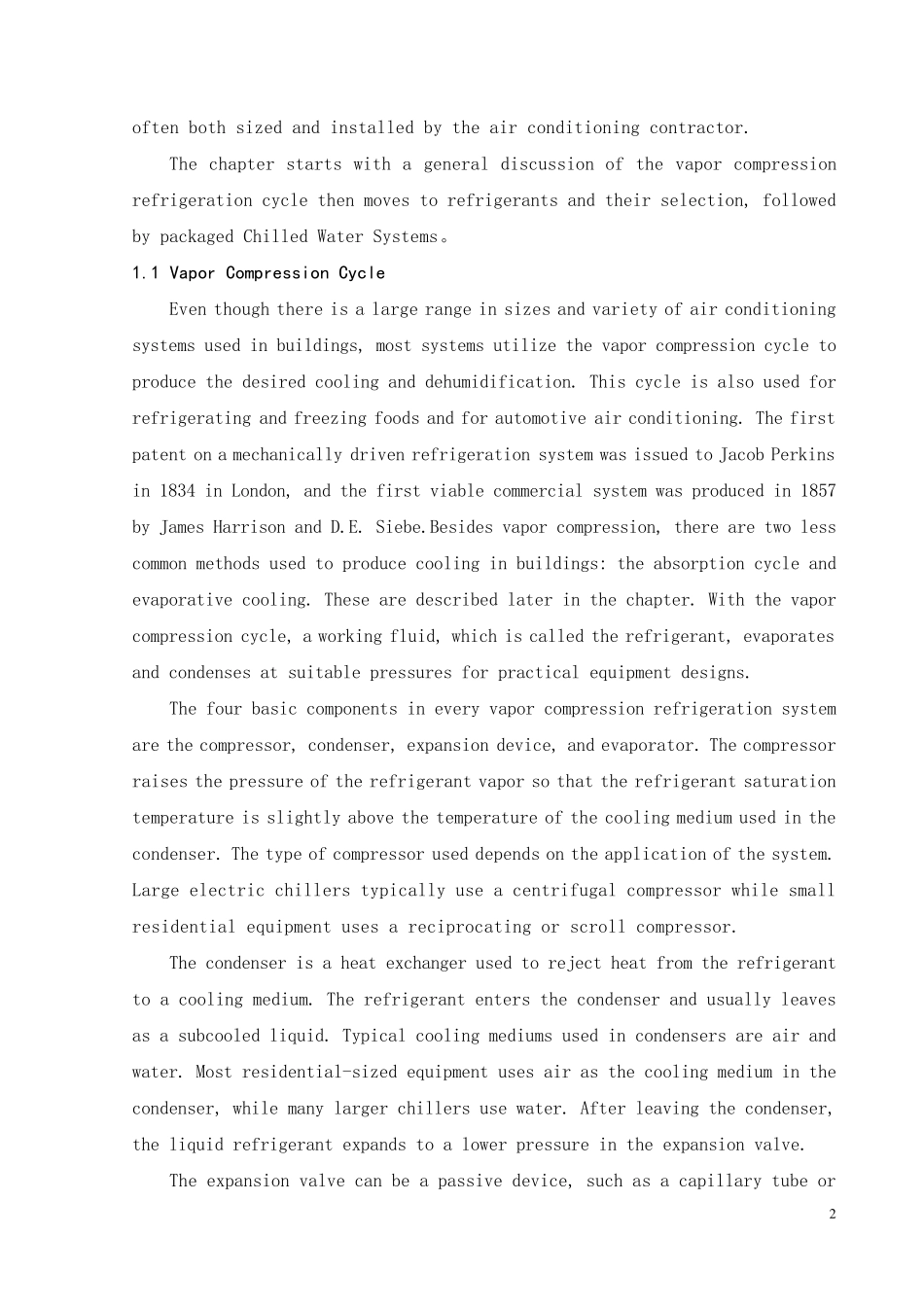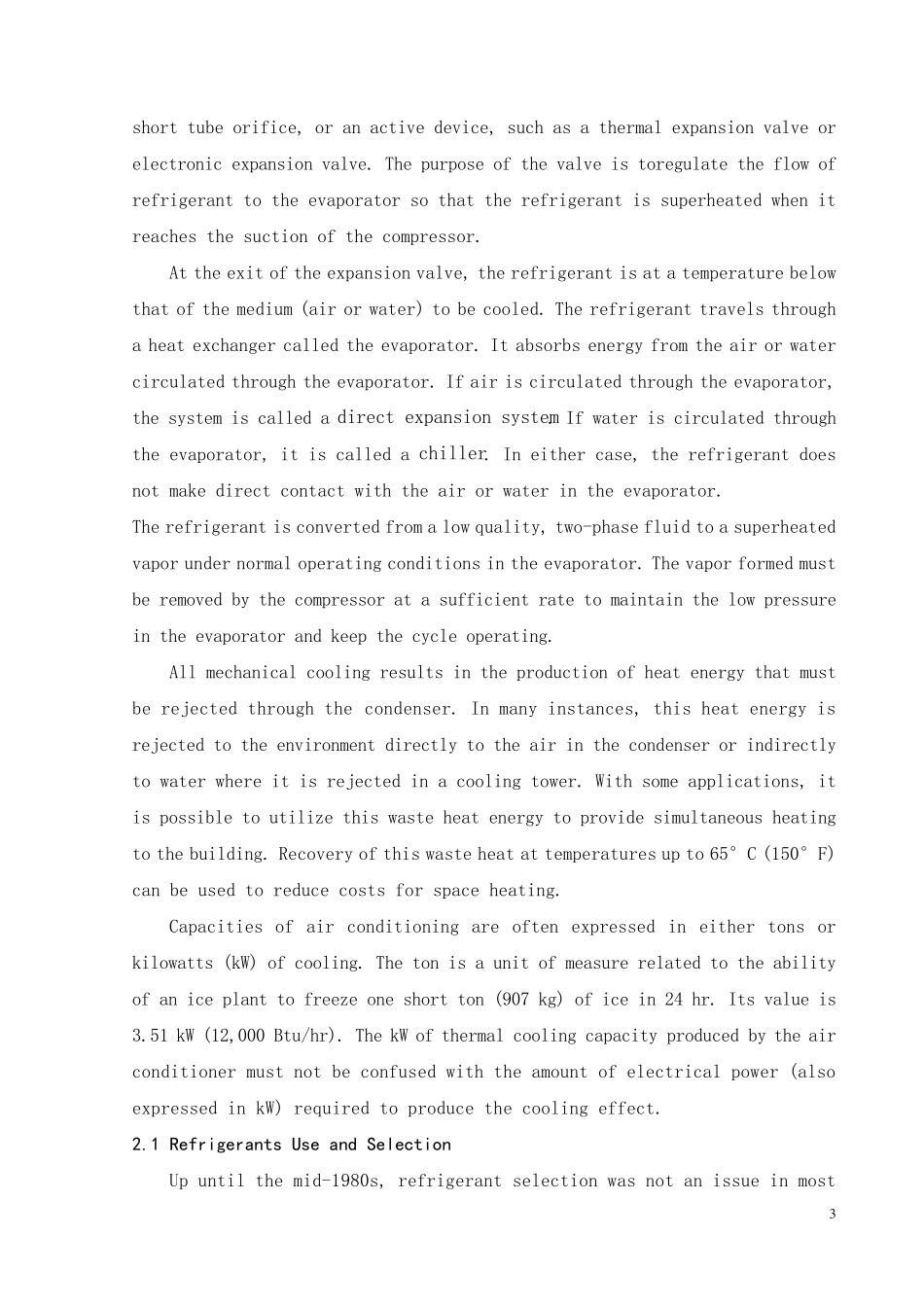英文文献 Air Conditioning Sy stems Air conditioning has rapidly grown over the past 50 years, from a luxury to a standard system included in most residential and commercial buildings. In 1970, 36% of residences in the U.S. were either fully air conditioned or utilized a room air conditioner for cooling (Blue, et al., 1979). By 1997, this number had more than doubled to 77%, and that year also marked the first time that over half (50.9%) of residences in the U.S. had central air conditioners (Census Bureau, 1999). An estimated 83% of all new homes constructed in 1998 had central air conditioners (Census Bureau, 1999). Air conditioning has also grown rapidly in commercial buildings. From 1970 to 1995, the percentage of commercial buildings with air conditioning increased from 54 to 73% (Jackson and Johnson, 1978, and DOE, 1998). Air conditioning in buildings is usually accomplished with the use of mechanical or heat-activated equipment. In most applications, the air conditioner must provide both cooling and dehumidification to maintain comfort in the building. Air conditioning systems are also used in other applications, such as automobiles, trucks, aircraft, ships, and industrial facilities. However, the description of equipment in this chapter is limited to those commonly used in commercial and residential buildings. Commercial buildings range from large high-rise office buildings to the corner convenience store. Because of the range in size and types of buildings in the commercial sector, there is a wide variety of equipment applied in these buildings. For larger buildings, the air conditioning equipment is part of a total system design that includes items such as a piping system, air distribution...


